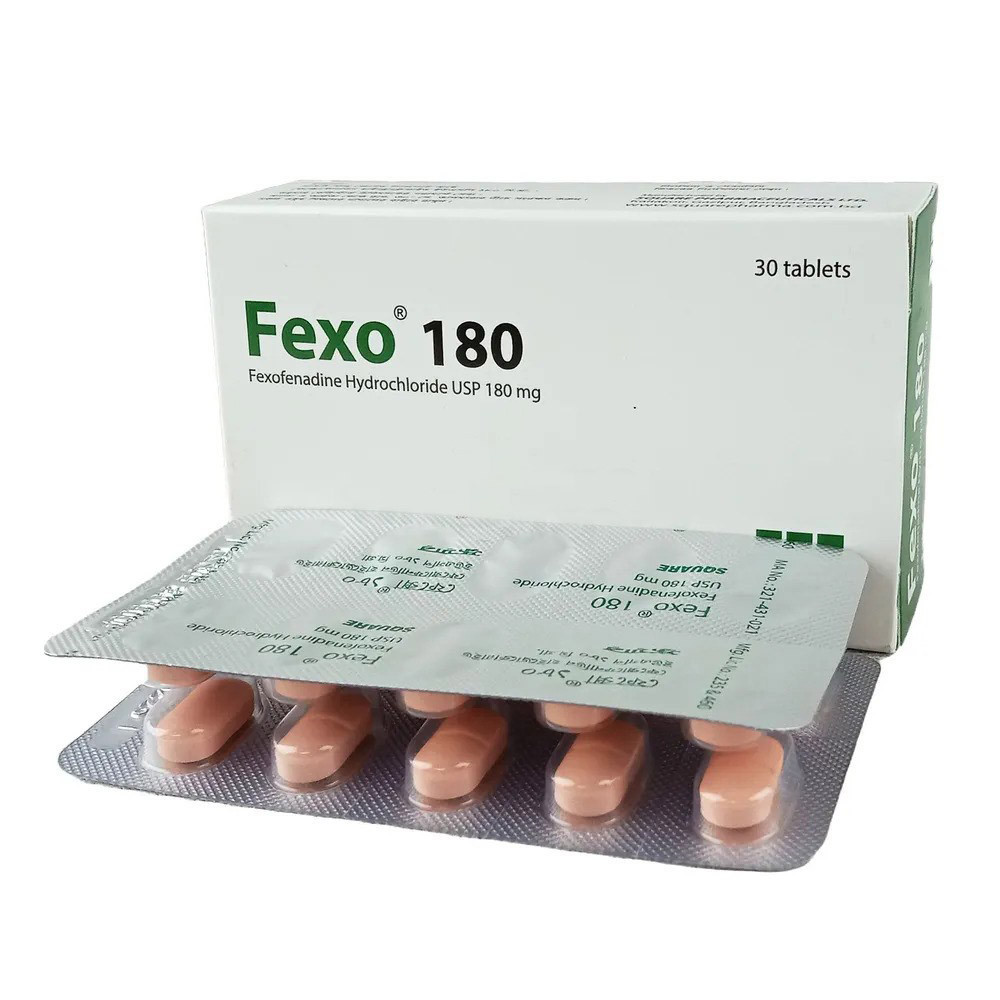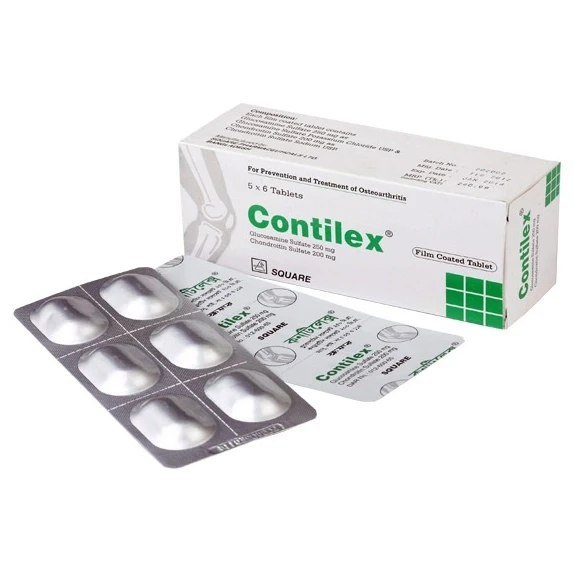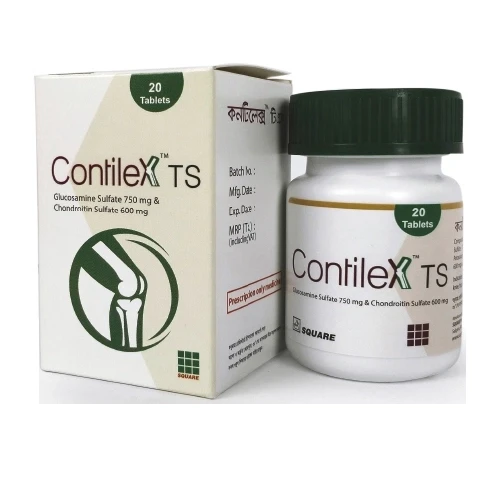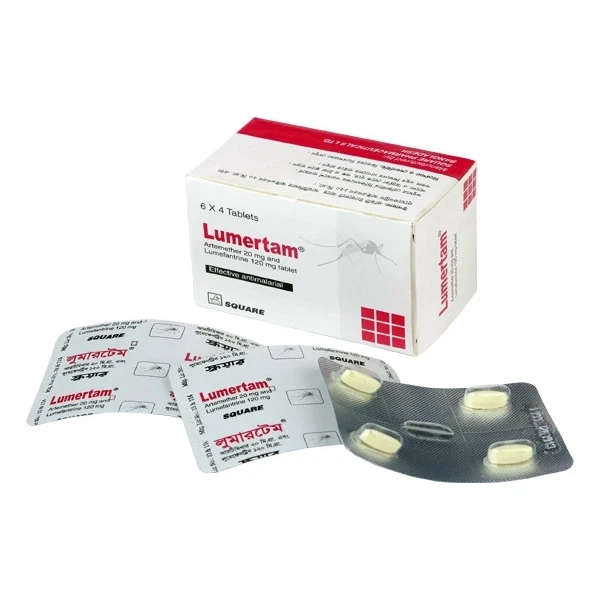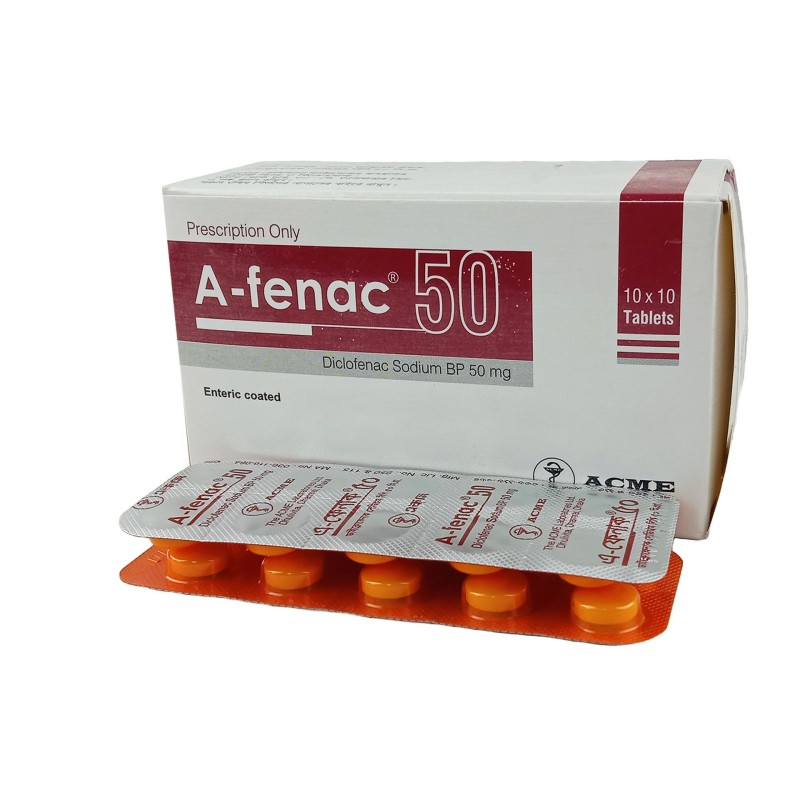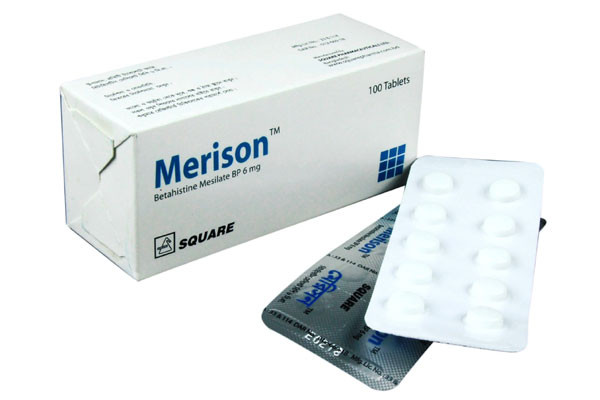

Ponatigen Tablet (30 pcs), Ponatinib Hydrochloride 45 mg
Inhouse product
-
৳11.40
৳12.00 -
৳42.75
৳45.00 -
৳16.63
৳17.50 -
৳2.14
৳2.25
Reviews & Ratings
Indications
Chronic Myeloid
Leukemia (CML): Ponatigen is
indicated in adult patients with chronic phase, accelerated phase, or blast
phase chronic myeloid leukaemia (CML) who are resistant to dasatinib or
nilotinib; who are intolerant to dasatinib or nilotinib and for whom subsequent
treatment with imatinib is not clinically appropriate; or who have the T315I
mutation.
Philadelphia
chromosome positive acute lymphoblastic leukaemia (Ph+ ALL): Ponatigen is indicated in adult patients
with Philadelphia chromosome positive acute lymphoblastic leukaemia (Ph+ ALL)
who are resistant to dasatinib; who are intolerant to dasatinib and for whom
subsequent treatment with imatinib is not clinically appropriate; or who have
the T315I mutation.
* রেজিস্টার্ড চিকিৎসকের পরামর্শ মোতাবেক ঔষধ সেবন করুন'
Pharmacology
Ponatinib is a kinase
inhibitor. Ponatinib inhibited the in vitro tyrosine kinase activity of ABL and
T315I mutant ABL with IC 50 concentrations of 0.4 nM and 2.0 nM, respectively.
Ponatinib inhibited the in vitro activity of additional kinases with IC 50
concentrations between 0.1 nM and 20 nM, including members of the VEGFR, PDGFR,
FGFR, EPH receptors and SRC families of kinases, and KIT, RET, TIE2, and FLT3.
Ponatinib inhibited the in vitro viability of cells expressing native or mutant
BCR-ABL, including T315I. In mice, treatment with ponatinib reduced the size of
tumors expressing native or T315I mutant BCR-ABL when compared to controls.
Dosage & Administration
Therapy should be
initiated by a physician experienced in the diagnosis and treatment of patients
with leukemia. Haematologic support such as platelet transfusion and
haematopoietic growth factors can be used during treatment if clinically indicated.
Before starting treatment with ponatinib, the cardiovascular status of the
patient should be assessed, including history and physical examination, and
cardiovascular risk factors should be actively managed. Cardiovascular status
should continue to be monitored and medical and supportive therapy for
conditions that contribute to cardiovascular risk should be optimised during
treatment with ponatinib.
Recommended dosage: The recommended starting dose is 45 mg of
ponatinib once daily. Treatment should be continued as long as the patient does
not show evidence of disease progression or unacceptable
toxicity. Discontinuing ponatinib should be considered if a complete
haematologic response has not occurred by 3 months (90 days). The risk of
arterial occlusive events is likely to be dose-related. Reducing the dose of
ponatinib to 15 mg should be considered for CP-CML patients who have achieved a
major cytogenetic response taking the following factors into account in the
individual patient assessment: cardiovascular risk, side effects of ponatinib
therapy, time to cytogenetic response, and BCR-ABL transcript levels. If dose
reduction is undertaken, close monitoring of response is recommended.
Elderly patients: Of the 449 patients in the clinical study of
ponatinib, 155 (35%) were >65 years of age. Compared to patients < 65
years, older patients are more likely to experience adverse reactions.
Hepatic impairment: Patients with hepatic impairment may receive
the recommended starting dose. Caution is recommended when administering
Ponatinib to patients with hepatic impairment.
Renal impairment: Renal excretion is not a major route of
ponatinib elimination. Ponatinib has not been studied in patients with renal
impairment. Patients with estimated creatinine clearance of > 50 mL/min
should be able to safely receive ponatinib with no dosage adjustment. Caution
is recommended when administering ponatinib to patients with estimated
creatinine clearance of < 50 mL/min, or end-stage renal disease.
Paediatric population: The safety and efficacy of ponatinib in
patients less than 18 years of age have not been established. No data are
available.
* রেজিস্টার্ড চিকিৎসকের পরামর্শ মোতাবেক ঔষধ সেবন করুন'
Interaction
CYP3A inhibitors: Ponatigen is metabolized by CYP3A4. Caution
should be exercised and a reduction of the starting dose of ponatinib to 30 mg
should be considered with concurrent use of strong CYP3A inhibitors such as
clarithromycin, indinavir, itraconazole, ketoconazole, nefazodone, nelfinavir,
ritonavir, saquinavir, telithromycin, troleandomycin, voriconazole, and
grapefruit juice.
Substances that may
decrease ponatinib serum concentrations CYP3A inducers: Co-administration of strong CYP3A4 inducers
such as carbamazepine, phenobarbital, phenytoin, rifabutin, rifampicin, and St.
John's Wort with ponatinib should be avoided, and alternatives to the CYP3A4
inducer should be sought, unless the benefit
outweighs the possible risk of ponatinib underexposure.
Contraindications
Hypersensitivity to
the active substance or to any of the excipients.
Side Effects
The most common
serious adverse reactions >2% (treatment-emergent frequencies) were
pneumonia, pancreatitis, abdominal pain, atrial fibrillation, pyrexia,
myocardial infarction, peripheral arterial occlusive disease, anaemia, angina
pectoris, platelet count decreased, febrile neutropenia, hypertension, coronary
artery disease, cardiac failure congestive, cerebrovascular accident, sepsis,
cellulitis, acute kidney injury, urinary tract infection and lipase increased.
Pregnancy &
Lactation
Pregnancy: There are no adequate data from the use of
ponatinib in pregnant women. Studies in animals have shown reproductive toxicity.
The potential risk for humans is unknown. Ponatinib should be used during
pregnancy only when clearly necessary. If it is used during pregnancy, the
patient must be informed of the potential risk to the foetus.
Breast-feeding: It is unknown whether ponatinib is excreted
in human milk. Available pharmacodynamic and toxicological data cannot exclude
potential excretion in human milk. Breast-feeding should be stopped during
treatment with ponatinib.
Fertility: No human data on the effect of ponatinib on
fertility are available. In rats, treatment with ponatinib has shown effects on
female fertility and male fertility was not affected. The clinical relevance of
these findings to human fertility is unknown.
Precautions &
Warnings
Myelosuppression: Ponatigen is associated with severe
(National Cancer Institute Common Terminology Criteria for Adverse Events grade
3 or 4) thrombocytopenia, neutropenia, and anaemia. Most of the patients with
grade 3 or 4 platelet count decreased, anaemia or neutropenia, developed it
within the first 3 months of treatment. The frequency of these events is
greater in patients with accelerated phase CML (AP-CML) or blast phase CML
(BP-CML)/Ph+ ALL than in chronic phase CML (CP-CML). A complete blood count
should be performed every 2 weeks for the first 3 months and then monthly or as
clinically indicated. Myelosuppression was generally reversible and usually
managed by withholding ponatinib temporarily or reducing the dose.
Arterial occlusion: Arterial occlusions, including fatal
myocardial infarction, stroke, retinal arterial occlusions associated in some
cases with permanent visual impairment or vision loss, stenosis of large
arterial vessels of the brain, severe peripheral vascular disease, renal artery
stenosis (associated with worsening, labile or
treatment-resistant hypertension), and the need for urgent revascularization
procedures have occurred in ponatinib-treated patients. Patients with and
without cardiovascular risk factors, including patients age 50 years or
younger, experienced these events. Arterial occlusion adverse events were more
frequent with increasing age and in patients with history of ischaemia,
hypertension, diabetes, or hyperlipidaemia.
Venous thromboembolism: Monitoring for evidence of thromboembolism
should be performed. Ponatigen should be interrupted immediately in case of
thromboembolism. A benefit -risk consideration should guide a decision to
restart ponatinib therapy.
Hypertension: During ponatinib treatment, blood pressure
should be monitored and managed at each clinic visit and hypertension should be
treated to normal. Ponatigen treatment should be temporarily interrupted if
hypertension is not medically controlled.
Congestive heart
failure: Fatal and serious
heart failure or left ventricular dysfunction occurred in ponatinib-treated
patients, including events related to prior vascular occlusive events. Patients
should be monitored for signs or symptoms consistent with heart failure and
they should be treated as clinically indicated, including interruption of
ponatinib. Discontinuation of ponatinib should be considered in patients who
develop serious heart failure.
Hepatotoxicity: Ponatigen may result in elevation in ALT,
AST, bilirubin, and alkaline phosphatase. Most patients who had an event of
hepatotoxicity had their first event during the first year of treatment.
Hepatic failure (including fatal outcome) has been observed. Liver function
tests should be performed prior to treatment initiation and monitored
periodically, as clinically indicated.
Haemorrhage: Severe haemorrhage, including fatalities,
occurred in ponatinib treated patients. The incidence of severe bleeding events
was higher in patients with AP-CML, BP-CML and Ph+ ALL. Ponatigen should be
interrupted and patients evaluated for serious or severe haemorrhage.
Hepatitis B
reactivation: Reactivation of
hepatitis B in patients who are chronic carriers of this virus has occurred
after these patients received BCR-ABL tyrosine kinase inhibitors. Patients
should be tested for HBV infection before initiating treatment with ponatinib.
Carriers of HBV who require treatment with ponatinib should be closely
monitored for signs and symptoms of active HBV infection throughout therapy and
for
several months following termination of therapy.
Overdose Effects
Overdoses with
ponatinib were reported in clinical trials. One patient was accidentally
administered the entire contents of a bottle of study medication via
nasogastric tube. The investigator estimated that the patient received 540 mg
of ponatinib. Two hours after the overdose, the patient had an uncorrected QT
interval of 520 ms. Subsequent ECGs showed normal sinus rhythm with uncorrected
QT intervals of 480 ms and 400 ms. The patient died 9 days after the overdose
from pneumonia and sepsis. Another patient accidentally self-administered 165
mg on Cycle 1 Day 2. The patient experienced fatigue and non-cardiac chest pain
on Day 3. Multiple doses of 90 mg per day for 12 days in a patient resulted in
pneumonia, systemic inflammatory response, atrial fibrillation, and a moderate
pericardial effusion. In the event of an overdose of ponatinib, stop ponatinib,
observe the patient and provide appropriate supportive treatment.
Therapeutic Class
Tyrosine Kinase
Inhibitor
Storage Conditions
Store in a cool and dry place. Do not store
above 30°C. Do not take Ponatigen if it is suspected of having been exposed to
temperatures greater than 40°C. Keep Ponatigen out of the reach and sight of
children.
Frequently Bought Products
Cavir Tablet, Entecavir 1 mg
Lumertam Tablet, Artemether + Lumefantrine 20 mg+120 mg
A-Fenac Tablet, Diclofenac Sodium 50 mg
A-Cal Tablet, Calcium Carbonate 500 mg
Fosfomax Oral Powder 3gm, Fosfomycin Trometamol 3 gm/sachet
Merison Tablet, Betahistine Mesylate 6 mg
Trevox Tablet, Levofloxacin Hemihydrate 500 mg
Product Queries (0)
Login Or Registerto submit your questions to seller
Other Questions
No none asked to seller yet
-
৳11.40
৳12.00 -
৳42.75
৳45.00 -
৳16.63
৳17.50 -
৳2.14
৳2.25
